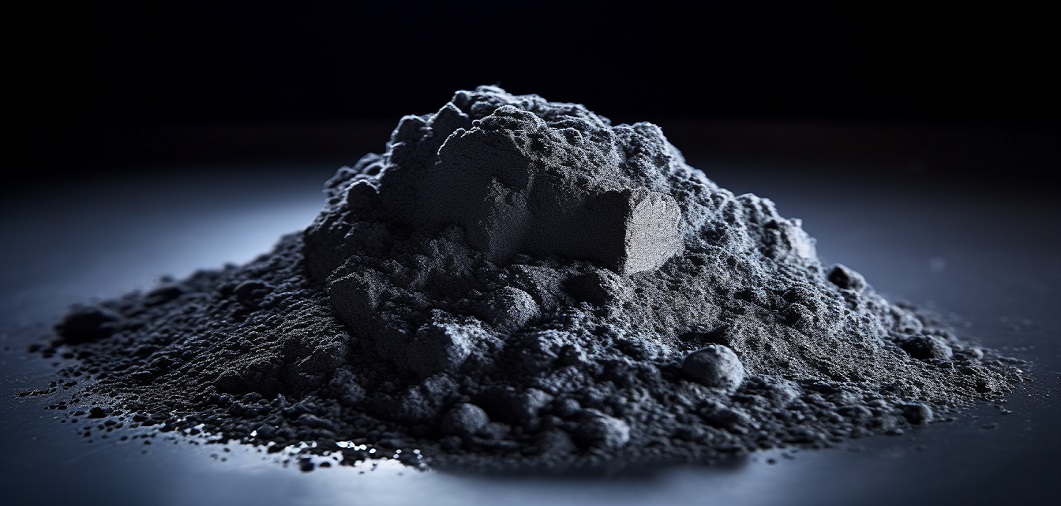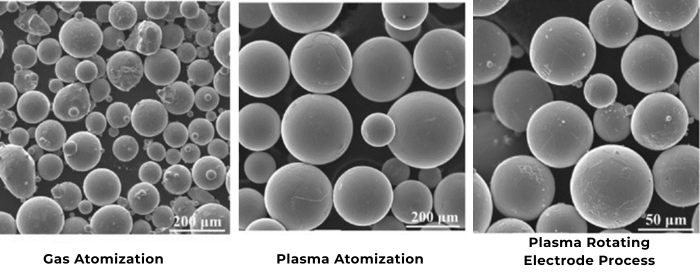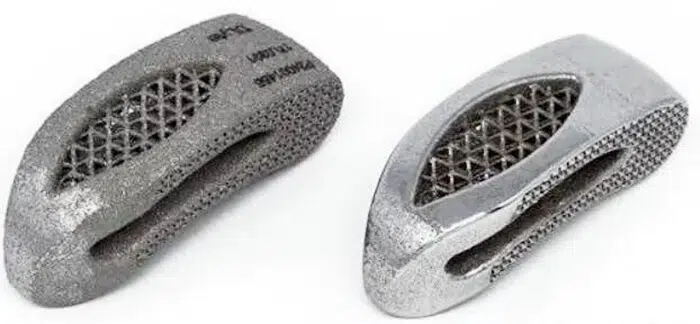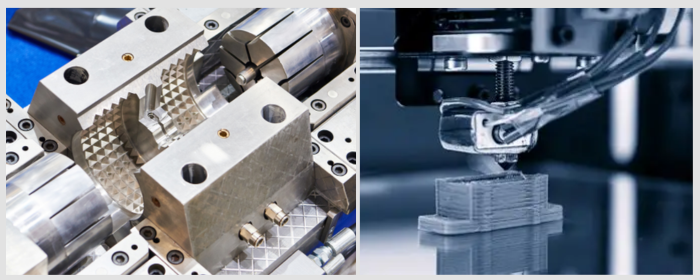

In the 1960s, traditional niobium alloys started their application in aerospace. Among those, the C103 alloy (Nb-10Hf-1Ti) became the most used one. It was applied to high-temperature valves, rocket thruster tops, turbine afterburner flaps, etc. Particularly, the radiatively cooled nozzle extension of the Apollo 2 lunar module's descent engine was fabricated by C103 alloy and coated with an oxidation-resistant aluminide layer.
With the rapid development of gas atomization and plasma atomization in the 1990s, C-103 powder began to be applied and received much attention with better performance and easier processability in the aerospace industry.
C-103 (Nb-10Hf-1Ti) alloy powder combines excellent high-temperature strength, superior formability, and good weldability. Its composition is designed to balance high-temperature strength, oxidation resistance, and processing properties.
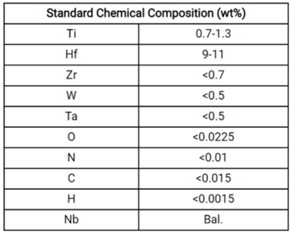
Fig 1. Composition of C103 niobium-hafnium alloy powder from SAM
Key alloying elements such as Hf, Ti, and Zr enhance solid solution strengthening, with Zr having a particularly pronounced strengthening effect. Meanwhile, Hf and small amounts of W improve high-temperature performance.
Research[i] by Sankar and colleagues explored the effects of internal oxidation on the microstructure and mechanical properties of C-103 alloy. They observed that as oxygen content increased (ranging from 100 to 2500 ppm), alloy strength and ductility declined, and internal oxidation caused surface embrittlement. The addition of Hf also significantly improved the alloy’s resistance to internal oxidation.
Impurity elements such as C, N, H, and O have a significant impact on the mechanical properties of the alloy. When oxygen content exceeds 0.1%, cold processing becomes more difficult. Adding small amounts of Ti to the powder not only enhances its processability but also improves its oxidation resistance.
In summary, the composition of C-103 niobium alloy powder balances high-temperature strength, oxidation resistance, and processing properties (ductility and toughness), making it an ideal material for high-temperature aerospace components.
References:
The Oxygen Content of C103 Spherical Powder
Overview of C103 Spherical Powder: Composition, Properties, Applications
C103 is an alloy of niobium used in important aerospace applications. The unique properties it possesses meet the demands of high-temperature environments and complicated designs.
.png)
Fig 2. Applications of C-103 Alloy Powder in Aerospace
C-103 is a very common material in rocket nozzles because of its outstanding high-temperature strength and oxidation resistance. These nozzles have to resist temperatures over 1400°C, and the microalloying design of C-103 with titanium and zirconium guarantees excellent creep resistance under such extreme temperatures. For example, the rocket nozzles of the Apollo lunar module used C-103 material for stability in high-temperature conditions.
C-103 exhibits excellent formability and outstanding resistance to thermal shock in combustion chambers and thermal shielding components. Combustion chambers must endure very rapid heating and cooling cycles, and C-103's ductility and toughness allow it to resist those one-dimensional thermal stresses while maintaining structural integrity. It is also utilized in the manufacture of turbine engine thermal insulation screens, wherein its oxidation resistance, effective for temperatures above 1200°C, considerably prolongs the lives of such components.
Another important use for the C-103 alloy powder is the 3D printing of complicated structures. The need today in advanced spacecraft designs combines light weight with high strength. Using additive methods, C-103 powder would enable the manufacture of complex, optimized parts such as honeycomb structures and topology-optimized components. The methods improve material utilization and reduce weight while retaining strength. Components manufactured via powder-based additive methods are 20% lighter than traditional forged parts, enhancing the fuel efficiency of rockets.
C-103 is also great for small propulsion system components, including propellant valves and high-temperature connectors. The requirements for such parts are very high regarding corrosion resistance and precision machining. C-103 has an edge over other materials due to its oxidation resistance and dimensional stability to guarantee long-term reliability for propulsion systems.
Application list
● Rocket engine nozzles
● Combustion chambers
● Heat shield components
● Turbine engine high-temperature heat shields
● Nozzle linings and burner nozzles
● Propellant valves
● High-temperature connectors
C-103 niobium alloy powder's excellent formability, high-temperature strength, and stable reliability make it highly cost-effective and further promote its applications in aerospace.
Founded in 1994, Stanford Advanced Materials (SAM) is committed to providing first-class atomized metal alloy powders to customers in the commercial and industrial fields. SAM can provide you with spherical C103 powder with an oxygen content of less than 0.025%. If you are interested in other Niobium Alloy Powders or Aerospace Alloy Powders, welcome to Get A Quote.
[i] SANKAR M, BALIGIDAD R G, SATYANARAYANA D, et al. Effect of internal oxidation on the
microstructure and mechanical properties of C-103 alloy[J]. Materials Science & Engineering A, 2013, 574:104-112

